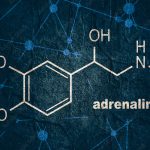Torticollis
This is known as wry neck and is defined by an abnormal, asymmetrical head position
– It is due to excessive contraction of the sternocleidomastoid which pulls the ear to ipsilateral shoulder and the face to the other side.
Causes:
Congenital torticollis:
– Birth trauma
– Also can be due to a sternocleidomastoid tumour
Acquired:
– Due to muscle spasm (most common)
– Also due to ENT infections, antipsychotics
Symptoms:
– Restricted head turning with pain on movement
– Tilting of the head to one side

Diagnosis:
Clinical Diagnosis
Management:
– Physical therapy like stretching helps and it usually self-resolves within a few days
– If unresolving, surgery may be required
Scoliosis
This is a condition which causes a lateral curvature of the spine
– This leads to bending of the spine and poor posture which if severe can cause distortion of the chest and even lead to cardiorespiratory failure
– The cause is unknown but thought to be mix of genetic and environmental factors
– It can be definied as structural in which the curve is permanently fixed, or functional, where the underlying spine is normal and the scoliosis disappears on movement
Symptoms:
– Pain in the shoulders and back
– Restrictive lung disease
– Limited mobility
– Uneven hips, arms or leg lengths
– Constipation due to tightening up of the bowel contents

Diagnosis:
X-Ray
Management:
– If minor –>can self-resolve
– If severe –> may require bracing and physiotherapy, else surgery is needed
Hypermobility Conditions
These conditions cause excessive movements and subluxation of the joints. Mild degrees of hypermobility are a normal finding in girls but excessive can lead to problems of joint dislocation
– Many with hypermobility are asymptomatic and enjoy the increased range of motion
– However, others experience recurrent muscle and joint pain which is often activity-related
– Children are advised to wear special types of footwear and given orthotics to reduce symptoms
– There are some conditions which lead to pathological levels of hypermobility causing complications
Marfan’s syndrome
This is an autosomal dominant condition which is due to a mutation in the FBN1 gene
– This gene encodes the protein fibrillin-1 which is a glycoprotein and component of the extracellular matrix
– This is critical for the structural integrity of connective tissue, but also serves as a reservoir for growth factors synthesis
Symptoms:
– Skeleton –> Tall, wide wingspan, scoliosis, pectus excavatum
– Limbs –> hyper-extensible joints, pes planus, arachnodactyly (abnormally long fingers and toes)
– Respiratory –> spontaneous pneumothorax
– Cardiac –> Aortic sinus dilation predisposing to regurgitation, aortic aneurysms, mitral valve prolapse
– Eyes –> partial lens dislocation, blue sclera, and myopia
– CNS –> weakening of connective tissue encasing spinal cord
Management:
No cure possible, monitor and manage complications
Ehler-Danlos Syndrome
This is an autosomal dominant condition leads to problems collagen synthesis
– Collagen is needed for the organic component of connective tissue
– This condition can be due to mutation in many genes, but ultimately results in connective tissue being more elastic
– This leads to symptoms in the skin, bones, blood vessels, valves, giving several complications

Symptoms:
– MSK –> hypermobile joints giving dislocation (predispose to osteoarthritis)
– Skin –> Stretchy elastic skin which bruises easily
– Cardiovascular –> Mitral valve prolapse, aneurysms, dissections, Raynaud’s
– Other –> pneumothorax, flat feet
Management:
No cure possible, monitor and manage complications


